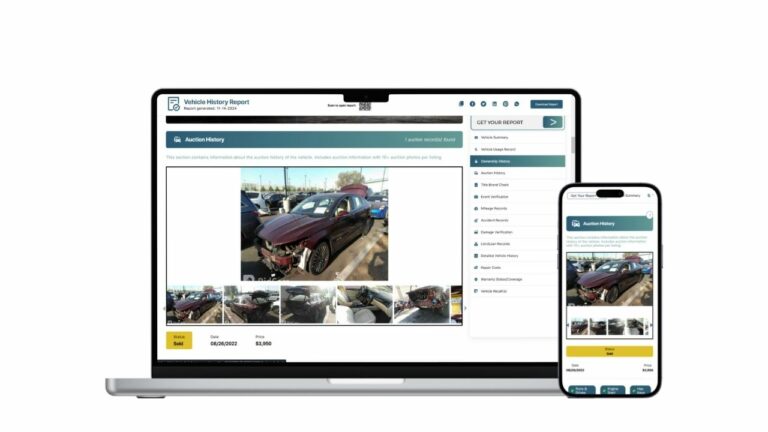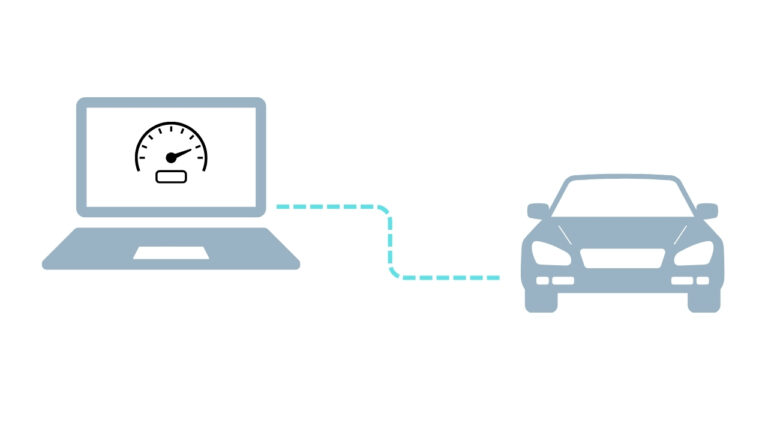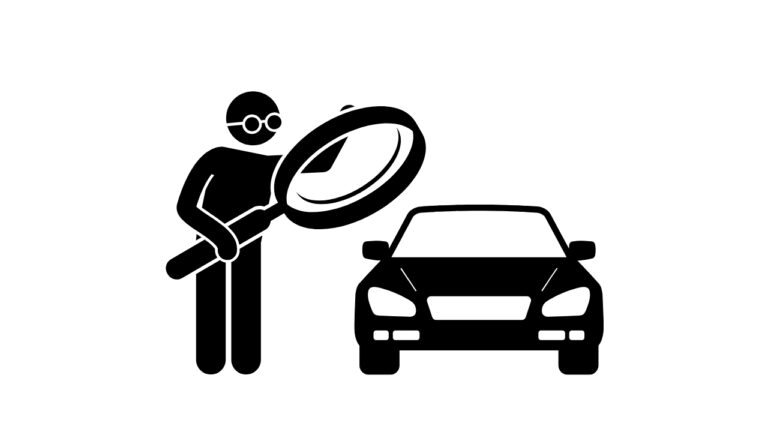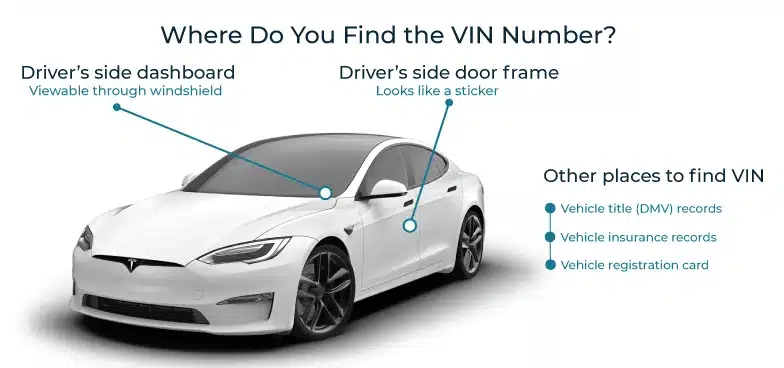Check Car Mileage By VIN
In 2024, over 2.14 million cars on the road were estimated to have had their odometer rolled back. Looking to buy a used car? Conduct a car mileage check by VIN to be sure that the car is not overvalued, and can still travel several miles without breaking down or needing major repairs.
Odometer vs. Mileage
Odometer is display tool on a car’s dashboard that shows how far the car has been driven. Mileage is the number it shows. So, the odometer is the device, and mileage is the distance. People check car mileage to know how much the car has been used before buying or selling it. However, the two are often used interchangeably.
Why Run a Car Mileage Check?
Checking mileage on cars before buying is very important. It helps you know if the car is worth the price and safe to drive. Here are five key reasons:
1. To Spot Odometer Fraud: Some sellers roll back the odometer to show lower mileage. A car mileage check can reveal if the numbers were changed, helping you avoid buying a car with false information.
2. To Know the Car’s True Condition: An odometer check helps you understand how much the car has been used. A car with high mileage might have more wear and need repairs sooner than one with low mileage.
3. To Check Service History: Cars are usually serviced based on mileage. A car mileage check helps you see if the car was maintained on time. Missed services could lead to bigger problems later.
4. To Avoid Overpaying: A car with high mileage should cost less than a similar car with low mileage. A car mileage check by VIN helps make sure you’re paying the right price for what you’re getting.
5. To Plan for Future Repairs: An odometer check by VIN helps you prepare for upcoming maintenance. Parts like brakes or timing belts need replacing after certain miles, so it helps you plan and avoid surprise costs.
How to Check Mileage of Car Online
Follow these steps to use our online tool to check mileage by VIN or conduct an odometer fraud check:
- Enter the VIN number into the form above. Also provide your email and phone number.
- Click “Search VIN” to initiate the car mileage check process.
- You may get a free odometer check to only see the last odometer reading from the preview page (if available)
- For a full car mileage check report, go ahead to purchase the report to access other records like accidents, titles, ownership, lien/loan and more.
If the VIN is not available, you can also check car mileage by license plate search.
Why People Roll Back Odometers
It’s both surprising and common to see sellers manipulate the odometer readings of the vehicles they sell. Dealers often do this to inflate the value of their cars.
For instance, a 2013 Toyota Alphard with 150,000 miles might be valued at around $13,000, whereas a similar model with slightly higher mileage could cost a few hundred dollars less.
The problem arises when a dealer rolls back the odometer reading to 100,000 miles, allowing them to sell the vehicle at a price well above its true worth, thus pocketing extra profit.
Unknown to the buyer, purchasing a vehicle with a tampered odometer can lead to significant future maintenance costs, as the underlying wear and tear on the car’s components may not match the misleading mileage.
Our findings show these US states have the highest percentage of rollback odometer cases.

The Importance of Mileage on Used Cars?
Mileage is the number of miles a car has been driven. It tells buyers how much the car has been used. Here are five reasons why car mileage check is very important:
- Shows Car’s Usage: Mileage helps buyers understand how often the car was used. A high number means the car has been driven a lot, which may lead to more wear and tear over time.
- Affects Car Value: Cars with lower mileage usually sell for more money. This is because they are expected to be in better condition and have a longer life left than high-mileage vehicles.
- Helps Plan Repairs: Mileage gives a clue about when certain parts might need fixing or replacing. For example, brakes, tires, and timing belts often wear out after a certain number of miles.
- Impacts Fuel Efficiency: Older cars with higher mileage may not run as smoothly and could use more fuel. This can cost the owner more money to drive compared to a lower-mileage car.
- Influences Insurance Costs: Insurance companies sometimes use mileage to set prices. Cars with high mileage may get higher rates because they’re more likely to have mechanical problems or get into accidents.
Detecting Odometer Rollback?
To conduct an odometer rollback check, you can use these ways to find out before purchasing the vehicle.
Get a Vehicle History Report

Obtaining a detailed vehicle history report through a car mileage check upon purchasing a car is easy and doesn’t take much time. Just enter the VIN into the search form above and watch the magic happen.
Our car mileage check report doesn’t only include the vehicle’s mileage; see below for the other records included in the vehicle history report.
- Odometer Roll Back: To see if the dealers have rolled back the vehicle’s odometer.
- Ownership History: Want to see how many previous owners the car has? We have the records.
- Accident History: Verifying if the vehicle has been involved in an accident
- Auction and Sales History: Check if the vehicle was sold at auction and examine its sales history. Then, head to the MSRP by VIN to evaluate the car’s initial price for accurate pricing insights.
- Lien and Loan History: It’s important to check the vehicle’s lien or loan history to avoid outrageous financial burdens in the future.
- Service and Repair History: Track the car’s service and repair history to know when to put the car into service. Check to see if warranties still cover the vehicle.
The vehicle history report includes odometer records and highlights special cases, like exempt mileage on the title, which may not always appear as expected.
Use a Computer Diagnosis

Unfortunately, rolling back the odometer on modern cars is relatively easy. The good news is that the mileage footage may stored in other vehicle electronic controls, usually in odd places like seat memory or parking assistance tools.
Running the computer diagnostic involves reading the recorded mileage in the ECU devices. The readings should be close to the number shown in the instrument cluster, as those are not synchronized in real time.
While the readings provided eye-opening insight, they may not perfectly match those from the ECU and the instrument cluster. Even minor changes, such as upgrading the wheel size, can disrupt the accuracy of the odometer readings. To fully understand your car’s configuration, like transmission, drive train, interior, paint code, MSRP, and other information, you can get the vehicle build sheet.
Physical Inspection of the Car

To inspect a car for odometer fraud, examine the odometer closely for signs of tampering, such as misaligned numbers or gaps between digits. Then, compare any misalignment with the car’s overall condition, including tire wear and interior features, relative to the displayed mileage.
- Windshield: Examine the windscreen to see if there are any chips and scratches from debris
- Pedals: It is important to check the pedals to see any worn-down.
- Steering wheels: Check the overall condition of the steering wheel to see any broken things in it.
- Driver seat: Try to sit in the driver’s seat while examining the vehicle’s interior features, including the driver’s seat.
Exhaust: As one of the important parts of the car, check if the exhaust is working properly.
Where to Report Odometer Fraud?
Government channels, such as the National Highway Safety Traffic Administration, part of the U.S. Department of Transportation, can be used to report odometer fraud.
The Odometer Fraud Investigation office operates through four regional locations: Northeast, Southeast, Midwest, and Western. Each office is staffed with skilled criminal investigators and administrative personnel. The office primarily aims to lower vehicle ownership costs by deterring odometer fraud under federal laws and regulations.
Here are the state agencies in charge of odometer fraud:
Detailed Vehicle History vs. Carfax Odometer Check?
The table below highlights the main differences Detailed Vehicle History and Carfax Odometer checks, comparing each service’s accuracy, methods, and features.
| Feature | CarFax | Detailed Vehicle History |
|---|---|---|
| Accuracy | Actual mileage reading is not guaranteed | Guarantee of full coverage of the odometer and mileage-driven |
| Odometer Inspection | No direct odometer reading or inspection | Directly reports the odometer reading and inspection |
| Mileage Discrepancy Detection | Only flags potential rolled odometer by mileage history | Explicitly notifies if a rolled-back odometer is detected |
| Methodology | Analyzed historically recorded mileage | Uses the window sticker lookup to get the data, including the odometer report. |
| Scope of Report | Focus on detecting odometer tampering | Provides detailed insights into the actual mileage and MSRP by VIN. |
Frequently Asked Questions
Is odometer rollback a felony?
Yes, odometer rollback is a felony. In the US, those who do it can be reported to the National Highway Safety Traffic Administration, charged up to three years in prison, and fined at least $10,000 per vehicle. In addition, sellers who roll back the odometer can lose their dealer’s license.
Is it possible to roll back a digital odometer?
Yes, it is possible to roll back a digital odometer. While it’s possible to do such a dishonest act, it is prohibited as you can be charged with a felony.
How can I check original mileage of a car?
A vehicle history report can help you check the car’s actual mileage, past accident history, ownership history, flood and hail damages, and more. Detailed Vehicle History offers a full report using the vehicle’s VIN, license plate, year, make, and model.
How can I tell if the odometer has been rolled back?
It is now easy to tell if the vehicle’s odometer has been rolled back. Conduct a car mileage check to get detailed vehicle history report to determine the vehicle’s actual mileage.
What is good mileage for a used car?
Cars that have been driven about 10,000 to 14,000 miles each year are usually seen as normally used. But the car’s condition also depends on its brand, model, and how well it was maintained.
200,000 miles is often considered a high mileage for a used car. However, well-maintained cars can last up to 300,000 miles.
Can you check mileage by VIN number?
Yes. A mileage check by VIN is possible. It’s more reliable than checking by license plate lookup since a car plate can always change. A car VIN remains throughout the car’s lifetime.

